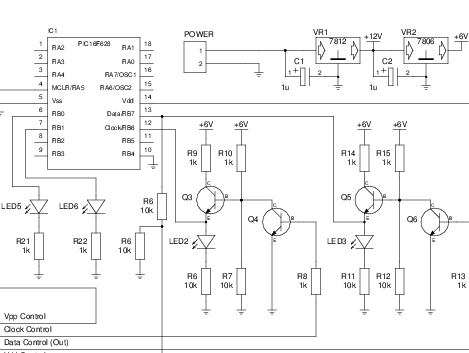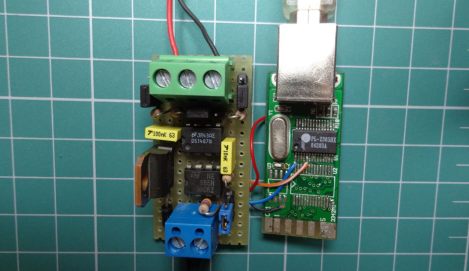
Here’s another offering when it comes to PIC programming from the Raspberry Pi. The design seeks to adapt the GPIO header so that it may be used for programming PIC microcontrollers, but this does involve a bit more than just physically connecting pins to the target chip. Most of the PIC family require a 12V programming level, and this setup makes that possible.
The sets of NPN transistors shown in the schematic fragment above are arranged in darlington pairs. They’re actually switching voltage from the 6V linear regulator built into the system using the Pi’s 3.3V pins. There’s also a 12V regulator, so you’re going to need a power supply that is capable of sourcing more than that.
We’ve seen a similar concept before but this design carries it a step further. There are several status LEDs built into the programmer, and it includes support for detecting which chip is being programmed. So far this covers just four different chips, but we’re sure that it could be adapted to fit your own needs.
[via Reddit]






 Once you’ve been tinkering around with electronics for a while, you’ll realize the through-hole components that make breadboarding a circuit so easy won’t cut it anymore. Surface mount parts are the future, and make it incredibly easy to build a semi-professional mockup at home. The question arises, though:
Once you’ve been tinkering around with electronics for a while, you’ll realize the through-hole components that make breadboarding a circuit so easy won’t cut it anymore. Surface mount parts are the future, and make it incredibly easy to build a semi-professional mockup at home. The question arises, though: 









